It’s Oscar season, and as an animator, Pixar’s Coco is almost a shoe-in to be the Best Animated Film (although the looming shadow of Boss Baby might just steal…lololol).
However, as an avid fan of all things animated, I was very happy with this movie when it came out in 2014 as The Book of Life, produced by Guillermo del Toro and directed by Jorge Gutierrez. Ok, so not really, these aren’t actually the same movie. But the similarities have made a lot of people wonder.
The Book of Life was a good and quirky film. Plus: it was great to see an animated film with an Hispanic director and producer get a big budget and a major studio behind it. It became an underground hit, even though it wasn’t a box office slam. In fact, it’s theatrical gross just barely covered the cost to make it in the US. In the end, it became more of a home video hit. So much so that when Pixar announced they were making a “Day of the Dead” movie, everyone instantly started to make comparisons.
If you look online for movie reviews for Pixar’s Coco, they are overwhelmingly positive. However, the majority of the negative reviews draw parallels to The Book of Life. These reviews chastise Pixar, suggesting they had no business producing a similarly-themed film 3 years later. These are lazy reviews. And those critics clearly haven’t watched The Book of Life recently. Well, I happen to own a copy and decided to watch it and compare for myself.
Before we begin…
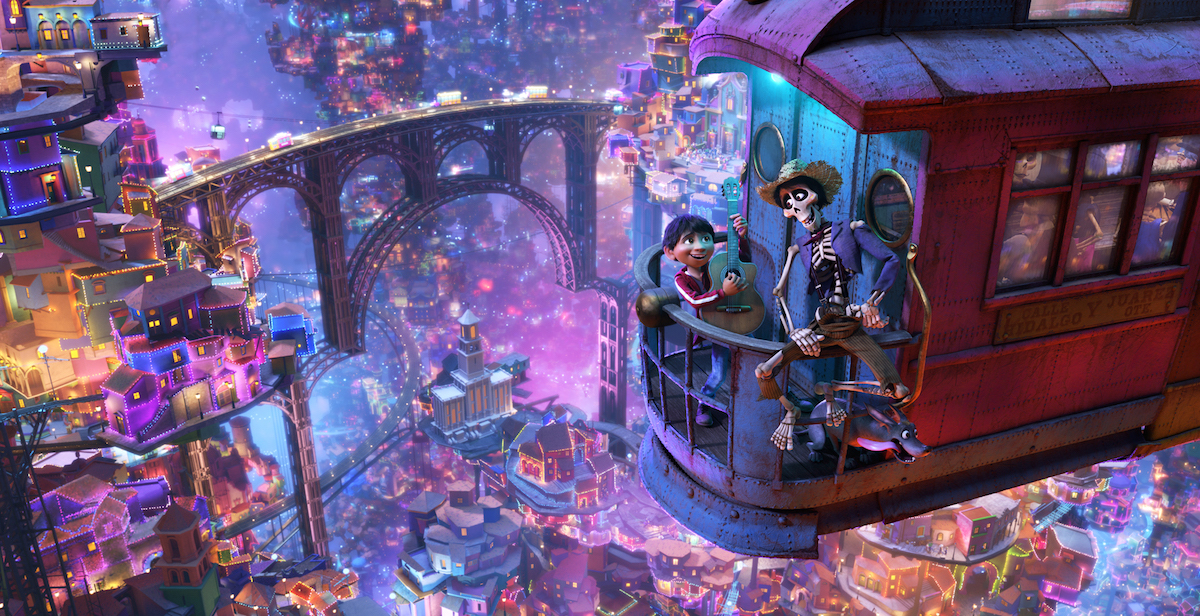
The Book of Life had a budget of around $50 million, while Coco has one upwards of $200 million. It’s not fair for me to compare these films directly considering the studios, the budgets, and the 3 year time difference. So instead, I’ll eschew technical comparisons for ones considering the writing, the music, the visuals, and the characters. If compared them directly, there’s really no contest. Coco is the clear winner when it comes to the quality of the visuals from the lighting to the textures to the rendering. Moreover, I’ll also discuss the way the culture is used in both films, from my point of view, as well as their many strange similarities, however questionable they may seem.
Story
Coincidental Rushed Plot
Conceptually, The Book of Life uses the Mexican cultural holiday of The Day of the Dead (Día de Muertos) to both kill and revive a character. It is really little more than a deus ex machina plot device by the end of the story. They establish the existence of the celebration at the beginning, but then it recedes to inconsequence. That is, until our recently killed hero, Manolo, passes a test of purity. All of a sudden we’re hit with the news that it’s the Day of the Dead again.
This gives way to a ton of coincidences. Coincidentally, this was also the day Manolo died; as well as the day his rival, Joaquin, and his love interest, Maria, are to be married; and, by pure chance, it’s also the day on of the villains, Chakal, attacks the village. This string of coincidences rush the story along a little too quickly and confusingly. Did they even bury Manolo before they got married? How long did they wait? Why couldn’t Joaquin protect the village without first marrying Maria?
Coincidences aside, the story is easy to follow and doesn’t lag anywhere. Although at times it does rush along a little too fast. Despite all this, the deaths of the characters, the big fight at the end, and even the hero’s redemption lacked any real strong emotional impact. Do we care that Manolo’s father and grandmother die? Not really, we kind of forget it happened. The characters surely don’t seem to care.
Well-Paced Fun Times
On the other hand, Coco focused on the Day of the Dead as a major plot point. Most of the story takes place that night, and it’s explained to the audience in a very non-condescending way what exactly it is and how it works. Throughout the film, the characters race to beat the clock and get Miguel back to the land of the living before the Day of the Dead ends. It’s a constant driving point, which neither rushes the story nor allows it to drag. When Miguel decides to find his great great-grandfather for a blessing, he does so knowing time’s already running out. He can’t stand the limitations his family forces on him, so he tries something else. He gets help, he forms a plan, and he follows through.
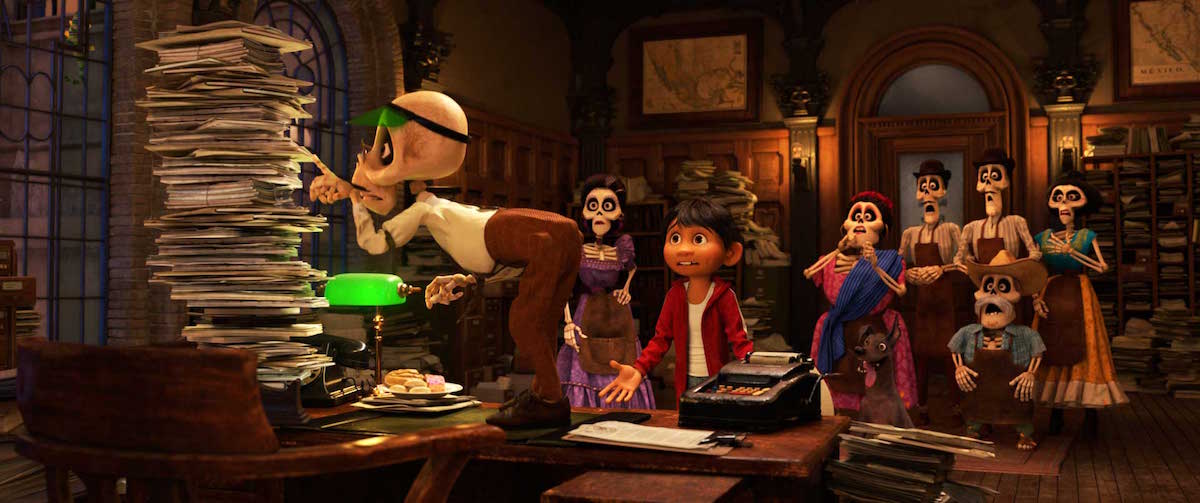
At no point did I ask myself “why didn’t Miguel do this instead?” or “what exactly happened?”. Instead, the story was easy to follow, with excellent timing. There are appropriate slow moments, some funny and exciting ones, and moments where the plot pleasantly throws you for a loop. The plot actually involved very heavy themes. While Manolo in The Book of Life was killed by a snake bite, it was from a strange mythical demonic-like character. When one of the major characters in Coco is murdered, he is poisoned by his best friend. The impact is much stronger.
Writing
Briefly, The Book of Life was written to appeal to a mainly American audience. For me, the culture seemed to only serve as a backdrop. The plot wasn’t anything particularly amazing, although fun, and the ending was predictable. There were also tons of deus ex machina moments in the film. From the Day of the Dead allowing the mythical characters to “bend the rules,” to the medal Joaquin wears, to the “Apology Song” destroying the monster. That isn’t to say the writing was horrible. It was fine, great even! For one, there were no glaring mistakes in the plot. Plus, there were rationalities for most of these elements, and the events had a logical flow. But timing-wise it was weak. I have no idea how much time passed since Manolo died until the end of the film. It all looks like one day, but it could have been several.
Coco, on the other hand, didn’t rely on deus ex machina to drive the story. While it too was written primarily for an American audience, the way they dealt with the cultural themes seemed more universal to me. The Day of the Dead was an essential theme throughout, along with music and family. The closest I could come up with to a deus ex machina were the spirit animals, but even they had a rhyme and reason to them. It was completely believable to me.
Characters
There really is too much to compare here for a short article. However, I will do my best. The characters from The Book of Life were relatively typical. You had the romantic hero with a literally pure heart (thanks to a magical plot device), a dashing jock that has too much confidence and egotism to be believable (again thanks to a magical plot device), and a rebellious young lady who is the Mary Jane of the film. She is educated, beautiful, refined, and trained in both sword fighting and martial arts. In short: she has no flaws whatsoever. She is even willing to marry someone she doesn’t love to protect her village. I would give these characters a B-, pretty typical and nothing special.
In Coco, you have the young boy discovering his place in the world. He secretly loves music despite his family’s hatred of it. He is the driving force of the movie and has wonderful personality quirks (such as his dimple trick) and flaws (such as his rebellious attitude against his family).
Then, you also have Hector, the deceased man who’s desperate to see his daughter again. Hector needs to get his picture in a family shrine or else he’ll officially be forgotten by everyone in his family. He struggles to help Miguel, hoping it’ll lead to seeing his daughter. But along the way, he discovers the truth about his own past that he never known otherwise. He grows and develops, and is fun and silly as well as deep and often conflicted.
Finally, you have Ernesto de la Cruz. In life, Ernesto was a confident, beloved musician, and in death his reputation and adoration make him hard to find. While he seems like the perfect man, you eventually learn his secret, and it becomes a major driving point to the plot. Granted, his transformation into the antagoist is abrupt, but also believable, unlike the villain in another snow-themed Disney film. I would give these characters an A- for their complexity and their intricate relations. No magical devices needed to make them interesting characters.
Music
Pop and Covers
The music in The Book of Life has bugged me for a long time. While it’s an important character attribute and a minor plot point, the music just didn’t feel right. To put it succinctly, the musicians were more concerned with performing covers of pop songs than producing original music. These covers felt forced to me, trying too hard to appeal to a mass audience.
The “Apology Song” was an original, and it works well in the film, but ultimately it is an apology to a bull for killing it. And it starts with the word “Toro,” severely limiting its emotional impact for me. I can’t picture myself singing this song to anyone who isn’t of the bovine persuasion. I understand this is an allegory, a song that is apologizing to his father and his ancestors and lineage, but the language used limits the emotional impact for me.
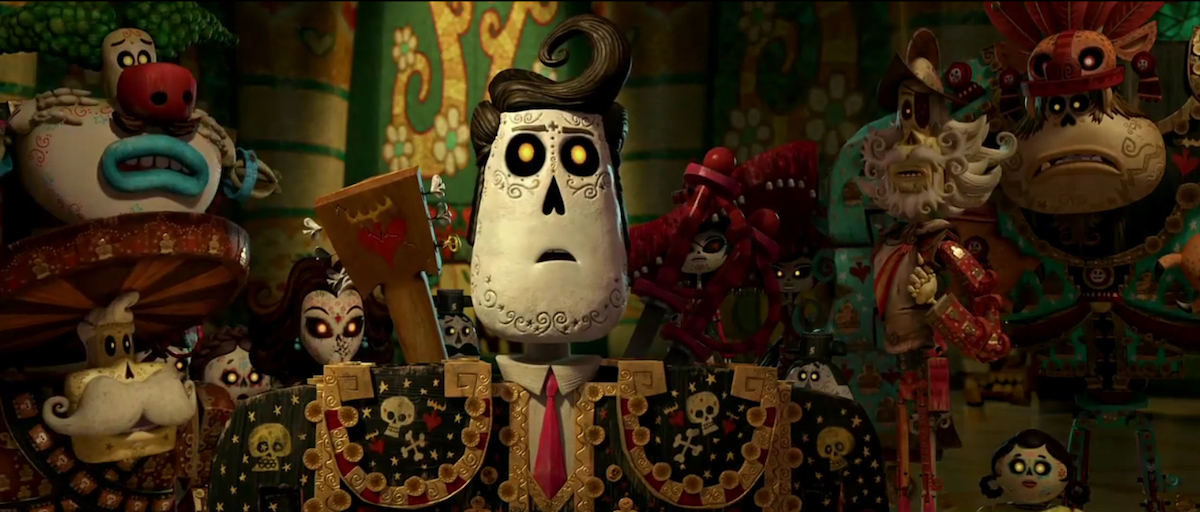
Another original song was “I Love You Too Much.” This is a fine song, with good lyrics and a tune. However, it’s just a typical sappy love song, not that it wasn’t good! I would say it is actually way better in Spanish (“Te Amo y Más”), but unfortunately that version doesn’t appear in the theatrical release of the film. The song “No Matter Where You Are” is a decent pop song at the end of the movie, and “Live Life” is another typical but good pop song which appears in the credits. Pretty much everything else was a cover, and as a result they were jarring. They were so distracting, I remembered how off they felt to me more than I recalled the other songs. At least they included Plácido Domingo, and allow him to sing a classic Mexican song, “Cielito Lindo”.
Striking The Right Chords
In Coco, the songs fit. None of them felt like pop songs played by a mariachi band. That’s because all the songs were either original songs or covers of traditional Mexican songs. At no point did I cringe as the main character sang about being a “creep.” In fact, I had a hard time telling which songs were traditional ones because they all fit so well. The music was often produced with Spanish mixed into them, such as “Un Poco Loco,” or was entirely in Spanish, such as in “La Llorona.” In addition, the film was made with an entirely Spanish version, and those songs were all included on the soundtrack.
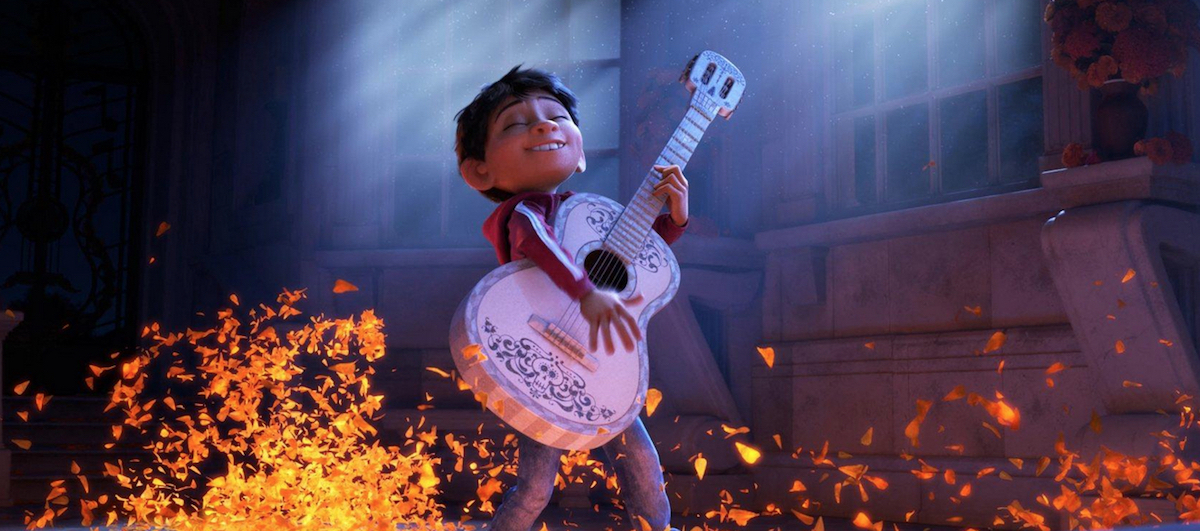
The signature song, “Remember Me” (“Recuerdame”), appears in 4 different takes throughout the film. It can get repetative, but each time you get something different out of it. The first is the popular version sung as a classic song from back in the day, and it sounds like a man asking his lover to remember him. The second time you discover that it was written as a lullaby, and the song has a very different meaning. The final in-story version plays in the penultimate scene, and explaining any more would spoil the movie. But I can attest that the entire theater, including myself, was in tears during it. The last version is the modern day pop song which is fun because it includes both the Spanish and English versions in it sung as a duet.
Between the two of them, it is a mixed bag. I enjoyed the sountrack to Coco more in the long run, but mainly because it inlucded both the English and Spanish versions of everything. They both have some good memerable songs, and some problems. Remember Me has too many takes, and the pop song covers in BoL are too out of place.
Visuals
Both The Book of Life and Coco have great visuals. In fact, some are rather similar. The scenery of both films features massive, tall, colorful, fantastical landscapes. Both have a strong theme with the yellow petals, as is culturally appropriate, and both have fantastic character designs.
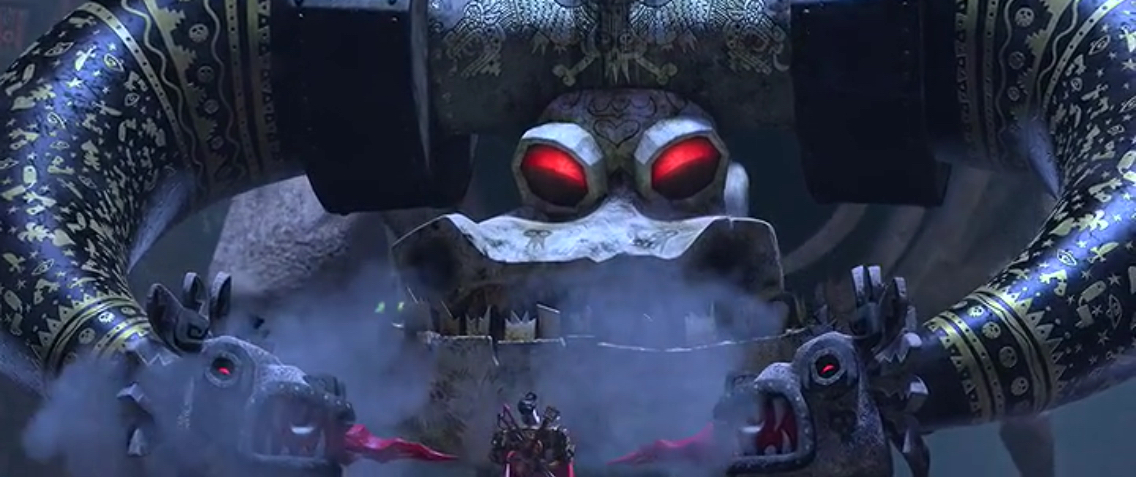
In The Book of Life, the story is told to children on a field trip. As such, all the characters are wooden dolls, which allows for some fun visuals and gags, and gives them a unique feel I really liked. The characteristics of the wood became characteristics of the characters. Even the dead characters had fun carvings on them, and there are plenty of opportunities for epic shots.
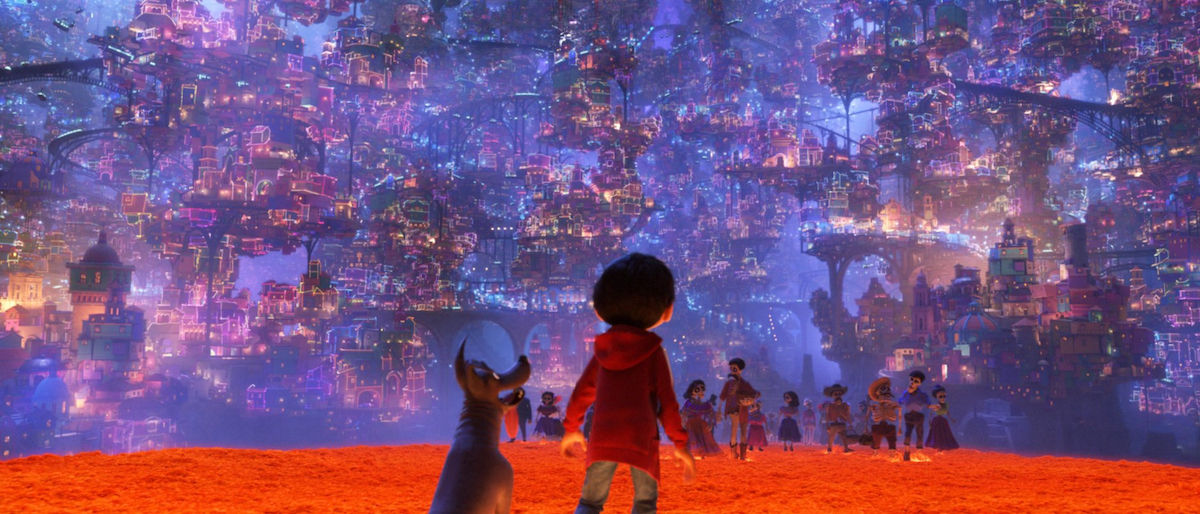
Coco didn’t do anything unusual in the style of the characters or world. However, their execution was exceptional, even exemplary. Most of this is due to the talent, technology, and budget they had, which makes it an unfair comparison. But it does make a difference. The City of the Remembered looks much grander and livelier and more colorful, and the skeletal character designs are well conceived and allow for fun gags. I would say Coco has the edge, but mainly due to the budget, while The Book of Life puts up a good fight for visuals, considering its limitations.
Culture
(A small disclaimer: I am a biased culturally-external person expressing my opinion; take it or leave it.) Both of these films handle Mexican culture very differently. The Book of Life doesn’t rely as much on culture as Coco does. However, when it goes to the cultural well, it relies mainly on tropes and stereotypes, such as matadors and luchadors. It does have some good mythical characters, though. Coco doesn’t focus on these stereotypes as much. Rather, it explains everything the audiences needs to know in a way that isn’t condescending. They present cultural ideas and traditions naturally and include some of their own ideas as well. It’s a great way to underscore the importance of these traditions, including their Spanish names, without annoying audience members already familiar with them. Whereas Coco portrays the culture in a positive and fantastic light, The Book of Life glosses over much of it.
And it is no wonder Coco does a good job of presenting the traditions and cultures of Mexico in my opinion: Disney/Pixar has done this before. During the production of Moana, Disney enlisted the help of Pacific Islanders. The creative team learned from them, talked with them, observed them, and integrated their findings into the film. Ultimately, this made Moana a culturally-accurate and engaging film. For Coco, Disney/Pixar took it one step further. They brought in a team of cultural experts, including critics of theirs, in order to get it right. What better way to make something work than to bring in someone who thinks you’re doing it wrong?
And it wasn’t just the Day of the Dead, but the music and art and people of Mexico that they studied. There are so many tiny things that speak volumes about the efforts they made. Little things such as Miguel’s grandmother throwing her shoe. The Book of Life lacked this level of subtlety.
Moreover, The Book of Life didn’t even use Hispanic actors for all the roles. However, it was produced by Guillermo del Toro, who was born in Guadalajara, Jalisco, Mexico (but is of Spaniard descent), and directed by Jorge R. Gutierrez, who was born in Mexico City, Mexico. On the other hand, Coco found appropriate actors, which all sounded appropriate and could say the Spanish words properly. While most of the production team are not hispanic or Mexican, the co-director and co-writer, Adrian Molina, is a second generation Mexican-American.
The Book of Life fails for me in regards to casting, even though it mostly succeeds in the directing/producing talent. While many of the cast in Book of Life are Hispanic and have accents, most of the main characters are not. They don’t sound like they fit, they have no accents and don’t pronounce any Spanish words. Meanwhile, for me, Coco excels in the casting although they could have included more Mexican and hispanic people in the production staff.
Similarities
Ok, now for some weird conspiracy level stuff. There are a lot of coincidences and similarities between these two films.
- Both of them have a strong focus on music, including protagonists who secretly yearn to be musicians. But not just any musician, a guitarist. Both have families that forbid and discourage their desire, which, of course, propels both films’ plots.
- What’s more, each movie has a character who’s crushed beneath a bell and killed.
- Both films end with the protagonist in an arena of sorts.
- Music is the key plot device in both films, and a single song fixes their problems.
- Each film features characters whose driving motivation is not being forgotten.
- In The Book of Life, a major character dies from venom; in Coco, a major character dies from poison. Not much of a departure there.
- Coco and The Book of Life both have a big focus on family, particularly on dead ancestors.
- Both protagonists reject their family business.
- Both families have a pair of deceased twins who are side characters.
- The dead mother characters in both films look similar and have similar gray streaks in their hair.
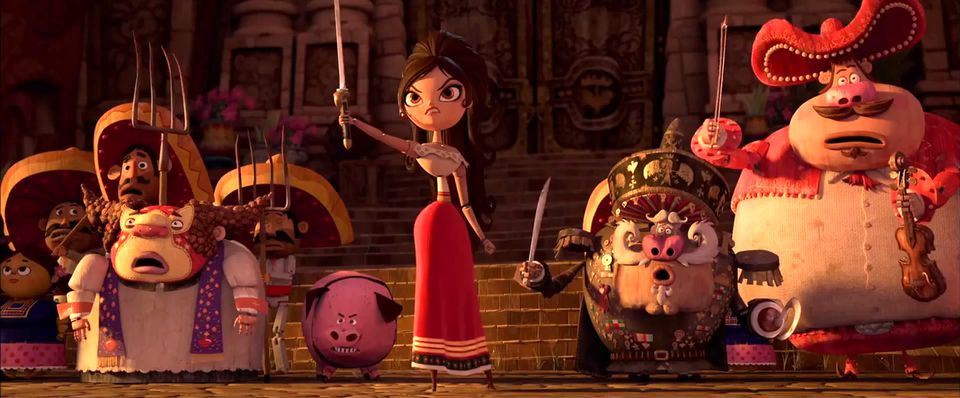
With all these similarities, it begs to question: did Pixar plagiarize The Book of Life?
Well, after looking at the two films, I can say definitely not. Maybe team Coco got a few ideas or some inspiration from the earlier film, but its execution is very different. They don’t feel like the same film at all. In fact, they are very, very different movies.
The Book of Life is far more over-the-top with the themes, the magic, the characters, the styles. Which isn’t a bad thing. In fact, it lends itself well to animation. What’s more, it’s primarily a love story, cut and dry.
On the other hand, Coco takes a more realistic approach, making the characters and situations, as fantastic as they are, more believable. Unlike it’s predecessor, it’s a movie about family.
Conclusion
These are both good films. The Book of Life is fun, fantastical, stylized, and enjoyable. However, it is a flawed film. Many themes are overdone. The ending is mostly predictable. Cultural aspects are minimal and often stereotyped. The timing is confusing, and the pacing rushed at times. Nonetheless, it was a fun enjoyable movie.
But comparing it to Coco is unfair. Not only did Pixar have a huge budget and came out later, but the feel and concept are actually very different. There is no hero, no epic battle with a giant monster (or two), no gambling magicians, and no magical medals. In their place, we get a touching look at family, music, and acceptance. These characters struggle in real and complex ways. From a father who left his family, to a son who wants to be a musician, to a mother torn between love and long-lingering resentment.
Ultimately, Coco is superior. The story is more solid. Music flows seamlessly, fits the film’s mood, and is very catchy. The themes are universal and not overdone. Mexican culture is prevalent throughout the film and isn’t presented negatively. Visually, it’s beyond breathtaking. The characters are fun and flawed and conflicted. I won’t say Coco is a perfect film, or even Pixar’s best. But it is up there as one of their top 5 films. If they borrowed from The Book of Life, they did an excellent job of making it their own and improving on those ideas.
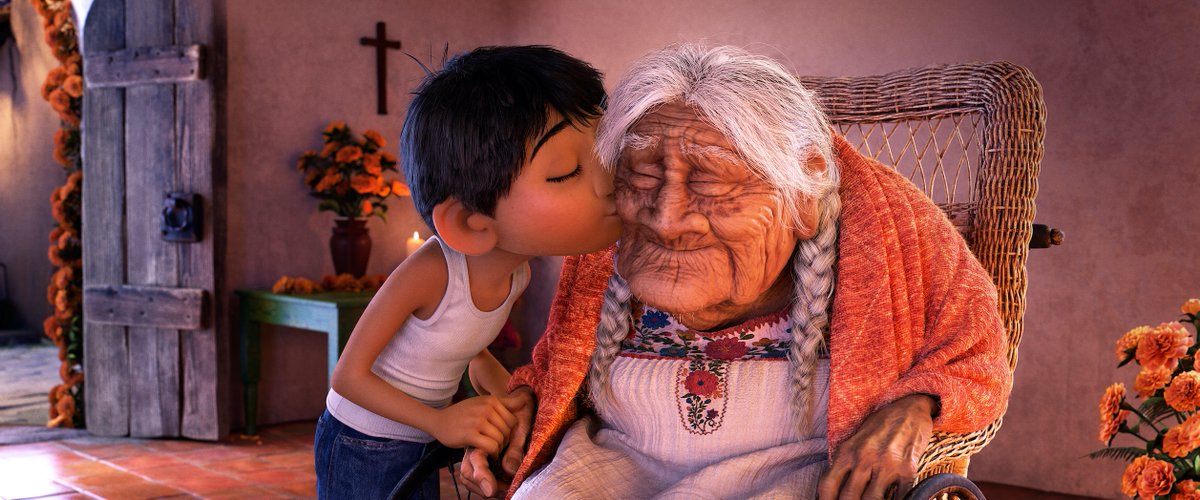
Coco may be a better film, at least to me, but that doesn’t mean The Book of Life isn’t a great film too. Both are highly rated, and I loved both. Remember that just because both films focus on the same holiday doesn’t mean you have to choose one over the other. I encourage you to see them both. And I encourage you to resist the urge to compare them. They are quite different, despite their similarities, and each deserves to be enjoyed for their own merits.
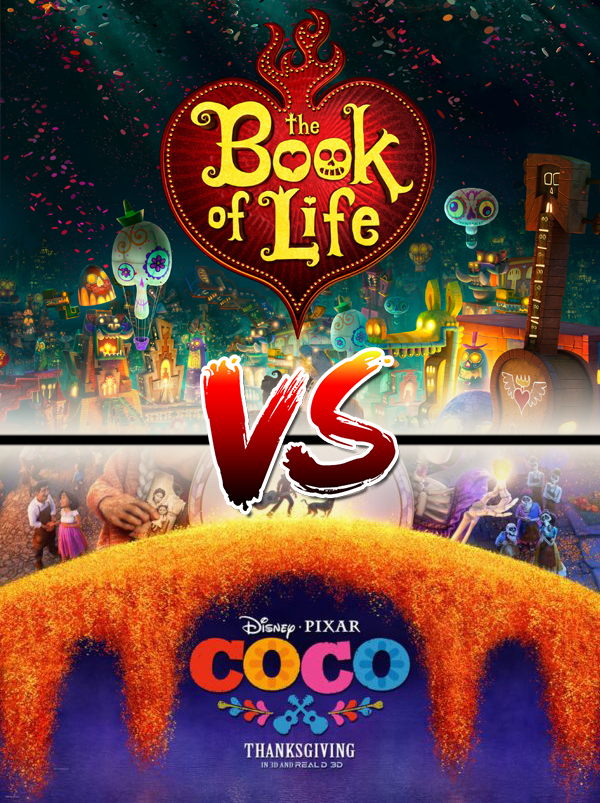
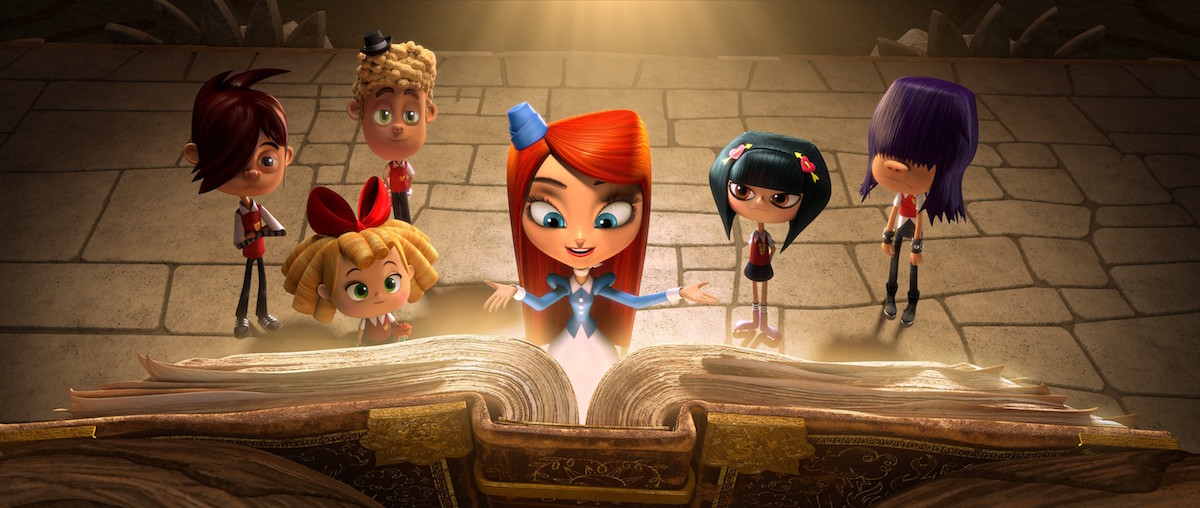
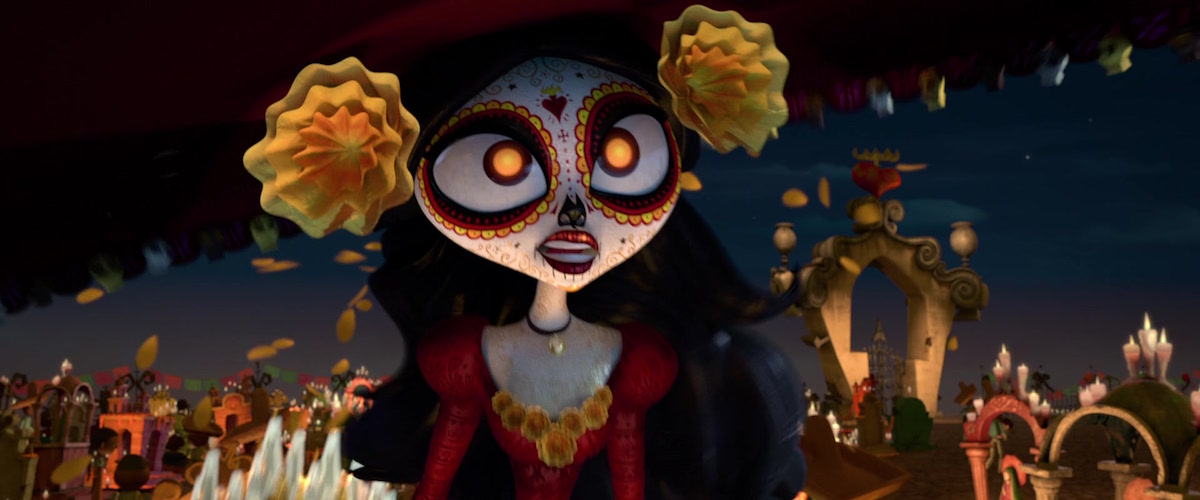
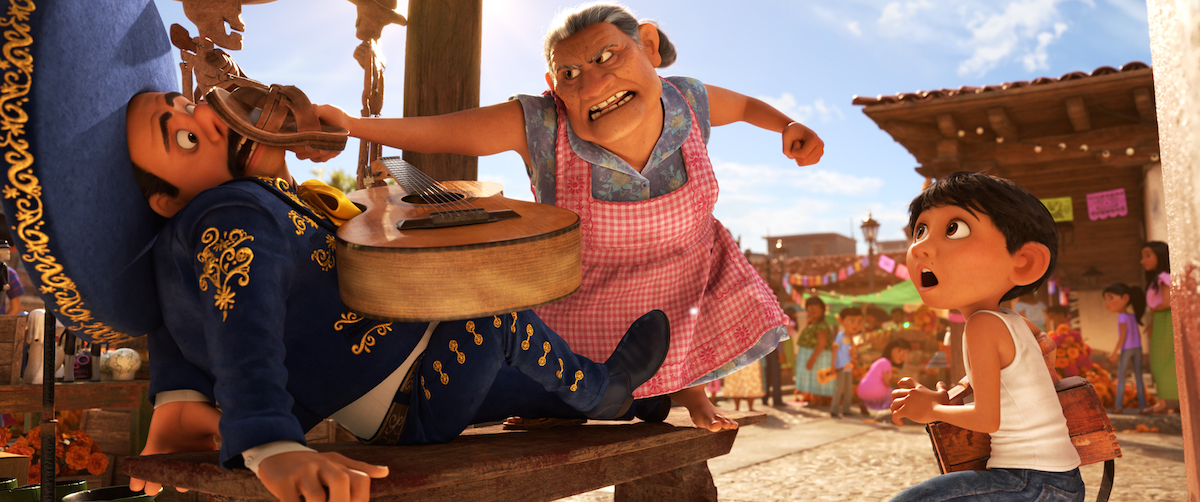
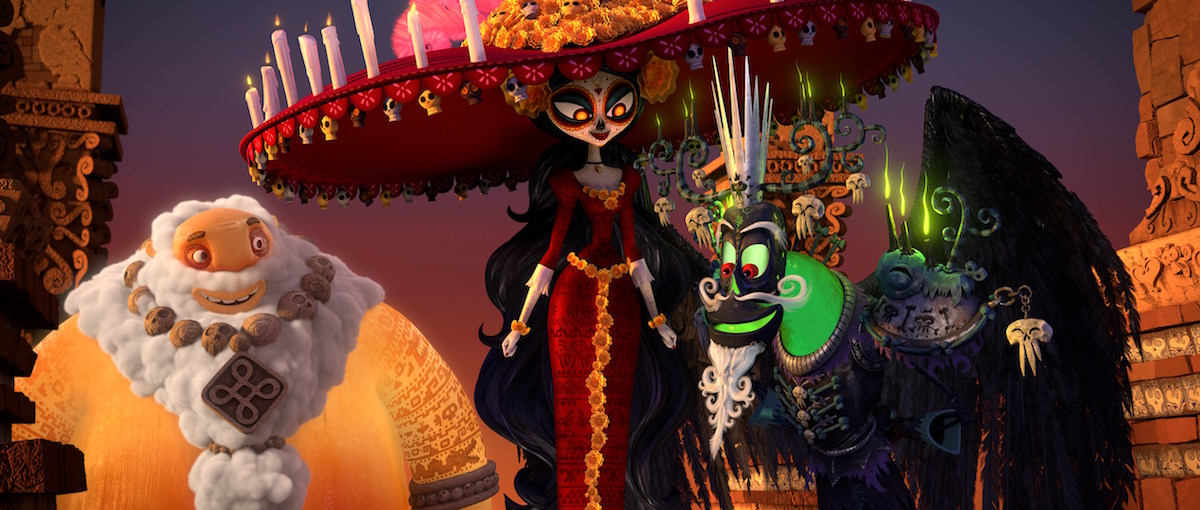

38 Responses
Relatively good in-depth analysis but I disagree in almost every way. Coco is an overwhelming copycat of a hugely popular (and yes on lesser budget) unique and true to culture animation. Everything about it is absolutely beautiful. The movie is about many forms of love: romantic, friendship, loyalty, forgiveness in a most unusual way and all accomplished by being true to who one is and not trying to be someone you are not. The characters are reliable in their development. It’s an animation, no one is looking for deeply developed and complex characters. The rich and authentic Mexican culture embedded into every aspect of this movie is nothing short of a first class thing of beauty. ditto for the music. The soundtrack is one of my favourite of all time. It’s a beautiful work of art , Book of Life . Makers of Coco capitalized on and rode the coattails of a previous success. They should pay royalties to Makers of Book of Life. Book of life remains one of my all time favourite feel good movies. I do adore Mexican culture and music , I admit and applaud this work !!
To say Coco rode the coattails of The Book of Life is really stretching it, to be honest.
I’m not saying The Book of Life isn’t beautiful or unique. In fact, it is still a favorite of mine, and they clearly put a lot of effort into the look development and visuals. If that was the only thing to compare them on, then I would say they are equally good considering the difference in time, scale, and budget, and might have agreed with you. But there is so much more.
The stories are really nothing alike. It’s like comparing The Seven Samurai to The Wizard of Oz.
BoL is about a love triangle between friends, a feud between two deities, and a bandit roaming the countryside ala The Seven Samurai. In fact, it has more to do with The Seven Samurai than with Coco.
Seriously. A village is in trouble as bandits threaten them. They need help from an outside band of fighters, whose leader used to be one of the villagers. They have to convince them to stay and fight for them. One of the fighters falls in love with one of the village girls, and there is jealousy/conflict over it. These are the themes to both Seven Samurai and Book of Life.
Meanwhile, Coco is about family, forgiveness, betrayal, the day of the dead, and music.
Ultimately, it is about a child with a dog who feels outcast from his family and finds himself thrust into a strange land. He needs to try to get home. He learns there is a man in a far away tower who can help him. He finds a friend (or a few) who help him, only to discover the man is not who he thinks he is, and he has to stop someone dangerous to save his friends and himself. This seriously has more to do with the Wizard of Oz than with the Book of Life.
Yes they have several similar themes, but they are used in very different ways and many of them have to do with the holiday itself (the holiday focusing on ancestors and the land of the remembered).
Most of the songs in BoL are covers, most of the songs in Coco are either traditional or originals. BoL includes such stars as Ice Cube, Ron Perlman, Channing Tatum, and Christina Applegate. Coco includes an ALL Hispanic cast, without any actors who do not fit the role or brought in merely to get butts in the seats.
Also, no Pixar film ever needs to “ride the coattails” of a 3-year-old film by ReelFX. The name Pixar is enough to bring in an audience.
Yes, BoL includes romance, loyalty, friendship, and forgiveness, as does Coco, but they each handled these themes in very different ways. In BoL, romance is very direct with the two main male characters, who are friends and at the same time rivals, literally fighting over the girl, very cliche. In Coco, the romance is between a man and his wife who she thought had left her, even though he tried to return but was betrayed by his closest friend, so in reality, the story here is very very different.
Saying something like “it’s an animation” to an animator is like saying “it’s just numbers” to an accountant, or “it’s just a song” to a musician. It is so much more than that to so many of us. Because it is an animation, plenty of people are looking for deep, complex, developed characters, mainly because we want to bring something more to the medium other than “kid stuff”. To us having complex and developed characters help children learn and grow and help adults engage with the movie and characters more.
I see no reason Coco should pay royalties to The Book of Life, if anything, BoL should pay royalties to The Seven Samurai.
In the end, it doesn’t really matter if you agree with me or not, everyone has different opinions and taste, and I for one enjoy both these films for many reasons. I just feel that people comparing Coco to BoL really do an injustice to both films as they have less in common than they think, and movies borrow from other films all the time.
It’s really the difference between an inventive and sharp film, flawed, but doing something a little bit different in the CGI animated field, and a piece of extremely competent professional family entertainment, that doesn’t put a foot wrong, but is as predictable and formulaic as such films can be – but in a good way. It does exactly what it says on the tin. Nothing more and nothing less. Depending on my mood, I’d watch and enjoy either at the drop of a hat.
Conspiracy theories aside, but cynicism to the fore, the main thing they have in common, other than the basic locale, is forgettable songs.
Excellent review, but I have to say, I genuinely believe that Book of Life is a much better representation of the culture than Coco. While Coco may do a great and beautiful job of showcasing the basics of the holiday, Day of the Dead, and some of the nuances in the culture pertaining to it, Book of Life embodies the Latin culture, layered and suggestive as it is. The Book of Life may have plot loop holes, unanswered questions, and strange time progressions but so does any work of Latin American fiction. Simply look at any one of Fridas works and you are left with many more questions than you will ever have answers for, but mostly with a deep and lasting sense of magic and beauty. Coco is a great children’s film but mostly it is just great for American culture to get a shallow and happy glimpse into a culture they don’t understand. Both movies bring me joy, one simply appeals more to pop culture. It’s like comparing Tex-mex to actual Mexican food.. I like them equally.
Very good analysis! This is movie critiquing, so I appreciate yours, and everyone else’s opinion. All I can add is that thanks to Netflix/iTunes/digital movie downloads, we can all watch both of these movies over and over and over and… I guess it depends on how many kids you have and their level of obsession. Once you’ve had that opportunity to watch Coco and Book of Life multiple times, see which one leaves a greater impression on you. For me, it was Book of Life. It just feels more original and the story is more genuine. Coco feels a little bit like Costco food: good quality, good taste, good price — and then you get sick of it.
I don’t believe the ripoff conspiracy. Disney is just capitalizing on the Hispanic market to sell more tickets. I believe their marketing research budget is larger than their movie budget because it drives their overall corporate strategy.
Actually, the pitcher of the idea was literally just researching Mexican culture.
but the odds that Disney did only approve to budget might have come from that XD
My one critique of this review/comparison is that(in my opinion) the ending of Coco was just as predictable as the end of BoL. When Hector got the guitar from the old, fading skeleton I realized who Hector really was, and by extension, what De La Cruz’s final role in the film would be. This scene happens relatively early in the movie, and thus kinda ruined the reveal near the end. If you watch enough Disney/Pixar movies you soon realize they have two distinct ways of introducing the villain; either they are introduced early in the film and are clearly the villain, or they are introduced as someone who the main character has a strong connection to(looks up to, love interest, etc.) and near the climax of the film they reveal their true intentions.
So Disney got in hot water for trying to Trademark day of the dead for an upcoming Pixar film in 2013. They had been working on Coco LONG before book of life came out. This reminds me of The Worst Witch and Harry Potter. The Worst Witch Came our first in the 70’s. It has a boarding school for witches. I kind and wise silver hairs headmistress, a strict and raven haird potions teacher and three besties with an evil stuck up witch trying to ruin them at every turn… JK Rowling didn’t steal her ideas and when compared Harry Potter is a much more developed story but the Worst Witch is still a lot of fun. Any way all that to say I agree and I don’t think Pixar stole anything since they have been working on this film for at least 5-6 years.
Yes, Disney/Pixar had been working on it for a long time, but in the world of animation, things can change drastically even at late stages. While it isn’t ideal, Pixar has changed major plot points of some of their most popular films such as Wall-E, where originally Walle was supposed to save Eve in the trash shoot, and they even showed this version in the trailers, but later on, decided that having Eve save Walle was more impactful. Since the Book of Life did come out around the time Pixar was trying to copyright the name of the movie and caused a minor uproar, they would have had plenty of time to change story elements or plot points if they felt it mirrored BoL too closely. I feel like they didn’t want to impede too much on what BoL is. Most of us in animation have the utmost respect for other animated films, and Pixar artists would have seen BoL and known not to look too much like it. My comparison is designed to show that while there are similarities between these movies, they are not really that similar. They are both enjoyable and should be watched for their own merits.
This critic is WAY TOO biased in favor of Coco. Coco used stereotypes and its ending was predictable. Really this seems almost like A Bug’s Life and Antz situation. The only rip-off is the one that came after..end of story. Both are good movies and tug at the heart-strings and are a good experience for the whole family. But…plain and simple…whichever came afterward is the rip-off. May be a good one…but still a rip-off.
Everyone is entitled to their own opinion, as you are to yours. I gain nothing by saying one film is better than the other, I worked on neither movie. Coco has been in development for years, so even though Book of Life came out first, Pixar had already started work on Coco, and so it is hard to justify your opinion that it is a rip-off, especially when the stories end up being so different in their execution and plots. If you bothered to read my review, I said both films are good and should be judged for their own merits and not compared to each other. To say just because one movie came out after another it must, therefore, be a ripoff means Star Wars is a ripoff of Hidden Fortress. I disagree that if one movie uses similar themes and ideas to another it automatically makes it an inferior movie, as you imply, and a ripoff, as you stated. The stories can’t be more different. One is about a rivalry over a girl gone wrong, the other is about finding your own path in life. Perhaps if you knew more about the original source material, Día de Muertos (aka Day of the Dead), you’d know both these films borrowed cultural ideas from the same holiday that may make one seem to copy the other, but in fact, it is only using the same source material. I also chose not to judge how good a movie is based on predictability alone, sometimes the journey to the end is more enjoyable than the ending itself. Sometimes a movie has a plot you predicted from the beginning, but you enjoyed every step toward that end goal along the way. Sometimes it is about the journey, not the destination. If I were to talk about predictability, Book of Life suffers horribly from this as there was no point in the movie that I didn’t see coming, and yet I still enjoyed it.
Let me repeat, both movies are good and enjoyable, both have good ideas and good visuals and enjoyable plots. The only reason I am “biased toward Coco” is that I enjoyed it more. I enjoyed both and highly recommend both, as I said in the post. Maybe instead of judging people for their opinions you should finish reading the article and back up your own ideas with examples.
Magical Realism is my favorite form of fiction. Guillermo Del Toro grew up in Los Angeles. I grew up in San Diego close to the border. My second language is Spanglish. My husband and I were married 49 years ago on All Saints Day. Can you guess which film I identify with? I live in northern CO now. Our local museum has one of the best DOD programs I’ve ever experienced. There’s a lecture being held on November 1st titled, “Stirring The Melting Pot – A Panel Discussion on Cultural Appropriation”. I’m thinking that The Book of the Dead and Coco will be terrific examples of this phenomenon. I’m a Gringa who grew up in a border town where public art and Hispanic traditions colored my life with great joy. I will also admit that learning of Disney’s/ Pizar’s poorly advised attempt at copyrighting this festival raised my hackles.
i gotta say COCO is the best movie ever made
Yes, it was in the works before BoL was released, however BOL was pitched in 2001, long before Coco was. Anyway, as a Mexican-American, I related way more to BOL and enjoyed it so much more than Coco. Also, while BOL seemed sterotypical (which I just took as it being used to make the film more light-hearted and funny), Coco seemed a bit (maybe more like a lot?) racist. I won’t go into detail why because I don’t want to offend my own people, but it was all I could think of throughout the movie. So blatantly obvious to me. I also find it odd that Disney keeps picking on GDT. He already had a princess character whose name was Moanna (yes, spelled differently and she is Spanish) and she’s a great heroine in the movie Pan’s Labyrinth, which was released in 2006-10 years before Moana. Then, casting Gael Garcia Bernal in Coco after Diego Luna was in BOL, just seems like a kick in the stomach. They’re like best friends. Were they deliberately trying to cause controversy??? There’s always a “who do you love more?” debate about these 2 among most Mexicans LOL.
What would actually make me laugh though, is if someone said “No! Disney’s auspicious entrepreneurs called in the ESP consultants to steal the pitch from the BoL cast!”
I have to disagree with some of this. While coco was a good movie, i found it incredibly predictable, even down to the fact that I knew in advance he was murdered and who the kid’s dad was. It isn’t fair to book of life to claim it was predictable and yet Coco was totally predictable in every way. The dog wasn’t a surprise. The grandma’s fate wasn’t a surprise. The death love interest even was predictable. I can’t watch this twice because the first time was like seeing a show i’ve seen before.
As a mom, our family favourite is Book of Life. Having to explain MURDER to my 5yearold was awkward, uncomfortable and unnecessary. Children need to be children. Explaining an evil choice coming from the keeper of the land of the forgotten is understood by little children’s minds better than understanding the darkness that lives in people’s hearts.
I find it interesting that you have a hard time explaining “MURDER” in Coco where one character is poisoned, but you have a no problem explaining the multiple murders in Book of Life. Minolo is poisoned by a snake, killed, murdered. His father is murdered by a band of bandits. Not sure why dealing with heavy topics on occasion is a bad thing with children. I can understand the apprehension, but your parenting style doesn’t concern me. If your child can’t handle it, don’t show them the movie. You should clearly be vetting all movies your kids watch since you think they can’t handle the PG-rated Coco.
The point of Dia de los Muertos is to live alongside death, to accept death by mocking it, and to honor your ancestors who have passed away. The Book of Life is a great representation of the day because of the humor it uses when dealing with death. The humor in general is very accurate. I am a Mexican American and I loved both movies but my heart belongs to the book of the life. Pixar did with Coco what it does with every movie; the protagonist goes on a journey and discovers the true meaning of life, love, and friendship, etc., etc. There are ups and downs along the way but they all do the same thing: they find a deeper meaning. Coco is unoriginal in the sense that is has the same formula for any Pixar movie, just with Mexican heritage as the subject. Yes, it was sadder. Yes, it had a deeper message. It’s visuals and music were stunning. But does that necessarily represent the Day of the Dead? Not all all. Both movies make me incredibly proud to be apart of this culture, but The Book of Life is a better representation of the day, and the heritage.
I feel like both movies could apply the same question. Do they really represent the day of the dead? Not that well. Dia de los Muertos seems to be merely a backdrop or an element. In the aspect of Coco it is really the excuse to enter this world and sets a time limit. In BoL it serves a similar purpose and doubles as a deus ex machina allowing the dead ancestors to show up at the end in the big fight. I can understand the appeal of The Book of Life being a closer representation and not following the same formula as Coco. You yourself admitted that Coco had a stronger emotion, message, visuals, and music, which to me makes it a stronger movie overall. Both are great films, and I love watching both of them. There are aspects of BoL that I absolutely love. The music is not one of them, in fact, it is the weakest aspect of the film choosing mainly English/American covers.
Maybe it was just the way it was written, but you seem to imply that Pixar made Moana which is not true.
It was not my intent to imply that Pixar made Moana, that is clearly a Disney film. However, Disney is the umbrella company for Pixar and many of the heads of Pixar are also the heads at Disney, at least at the time. Disney would have the influence and power over Pixar to implement a cultural team. Moana is one example where they implemented a team specifically for this, rather than just visiting the area for inspiration. Sorry if there was confusion there.
this is an AMAZING review. Gosh. I’m speechless, honestly. As a person who was always intrigued by culture and mythology, Coco and Book of Life sucked me right up, but I just felt that Coco was better somehow, and after reading your review, everything made so much sense. Thank you!!
It should be obvious from these reviewers sincere and honest comments that Book of Life and Coco are 2 different animated movie treatments which draw major content from a classic Mexican family celebration – the Day of the Dead. Book of Life on a tiny budget produced an original fabric story world that feels authentically Mexican and Latin. Pixar’s Coco has delightful moments, but feels like every other Pixar ‘chase plot’ and ’emotional’ scenic animation they do. If you can take the elongated OTT Disneyesque expensive-excitement in Coco, it’s worth watching for the lovely culturally researched moments. Animation is becoming more predictable every day.
You should consider looking at more independent and short animated films, they tend to have more flexibility in their storytelling, without the pressure to make money the way the big films do. As I said, I loved both Coco and BoL. I feel, for the budget limitations it had, BoL was a great film, with unique and cool character designs and concepts. Which is why comparing them directly is really unfair because Coco had so much more time and money to work on it. I understand a lot of people here don’t like Coco, for various reasons, which I feel is a disservice to Coco and the amazing artists that made that film.
I’ve watched both BoL and Coco and I’ve got to say that the two films have similar premises on paper but are nothing alike in execution and their focus on the respective themes. I enjoyed both in their own ways and I can’t seem to find what made Coco a ‘blatant rip off’ of BoL. The only similarity that seem to have people draw that conclusion is that both of the main characters have an interest in pursuing music contrary to their families’ wishes and both films are about, and/or have lore concerning the Day of the Dead. In that aspect it’s the same but the films completely diverge after that. BoL was primarily a comedy romance whereas Coco was primarily about family. When I watched BoL I haven’t felt that the major theme of the show actually was centered around the Day of the Dead as it was more of a plot device to the story which was the romance between Manolo and Maria. In Coco the entire story pretty much is that holiday. I’ve enjoyed BoL for the light, romantic comedy that it is (the scene Manolo confronting his fear was so, so beautiful) but Coco really hit me hard in the feels because, you know, family. The music in BoL was more memorable and enjoyable because of its familiarity and Coco scratched the itch of exploring the world you wish you saw more of when Manolo went to the Land of the Remembered. In conclusion to all this, I can find more similarities in Coco to Spirited Away than Coco to BoL so I think people should just watch both and give it a chance. I mean, I watched Coco after having read some of the negative feedback and had felt iffy but I ended the movie with tears streaming down my face. And I don’t normally cry with fictional stuff like that. So yeah, I throughly enjoyed it.
I could see where this review was going early on so I had to stop. I liked both equally and understand your viewpoints, but cherry-picking does seem to rear its ugly head here though.
In one section, it’s said that BOL’s characters were simplistic and predictable, whereas Coco has complex more interesting ones. For Coco – “He secretly loves music despite his family’s hatred of it. He is the driving force of the movie and has wonderful personality quirks and flaws such as his rebellious attitude against his family”…..er, in BOL, the main character loves music despite his family wanting him to be a bullfighter. He rebels and goes against his family as he knows bullfighting is wrong.
So I don’t understand your contradiction. Critisise one film whilst praising the other for same character traits.
Clearly, you didn’t read it all. Yes, they both share this trait, but as I said in the review, the main hero of the story has “a literally pure heart (thanks to a magical plot device)”, very stereotypical, and was THE driving characteristic for him. I do later compare the fact that both of these characters share the same motivation, the same forbidden love of music. I apologize if mentioning this was confusing, it wasn’t meant as a purely negative or positive response to those characters. They have similarities and differences. The main difference is in BoL, he seems to have no flaws, no negative personality trait that affects the story, while the childish relentless pursuit of his love for music has driven the character from Coco to drive his motivation, by running from his family in search for approval by another musician. In fact, it is this pursuit that drives him into trouble, while in BoL the trouble comes from a bet between two deities, and otherwise, it is a typical love triangle story. Simplicity is not bad, but BoL is more simple than Coco in the characters and their motivations. I mean the love interest in BoL is literally a perfect flawless Mary Jane, that can do nothing wrong, and even sacrifices her freedom and happiness for the people of the city, which is very weak writing. In short, the review points out that these movies each have their own plusses and minuses, but that Coco tells a stronger story. Both films are excellent and different enough that I don’t think Coco deliberately stole much if anything from BoL.
There are a couple of things that weren’t mentioned here: the villain, XIBALBA (NOT Chical), is given more time to be developed as a villain as opposed to Ernesto de la Cruz (who winds up getting the “Hans treatment”), and The Book of Life is altogether a more personal film than Coco. The latter was simply made as part of Disney’s push for diversity. The former is a Day of the Dead film that was made by an actual Mexican director. Well, there’s those, and there’s really only a few pop culture song covers, though their existences is justified considering that the story is being told to children, and pop culture songs keep finding their way to animated movies all the time. You missed No Matter Where You Are, Te Amo y Más, I Love You Too Much, Live Life, and not to mention Cielito Lindo.
You missed the point of The Apology Song. It’s not just an apology to bulls. That is only on the surface. The deeper meaning is that Manolo is apologizing to his father.
Personally, I saw Xibalba more as an antagonist. He is like any typical god where his interests are above mankind’s, and playing with humans is a past time. However, he does make a similar turn of character as Ernesto, only the other way, where he suddenly is a good guy at the end for whatever reason. Chical has absolutely no character development and is a 1-dimensional character, which I found very little of in Coco.
Yes, Book of Like was produced by Guillermo del Toro and directed by Jorge Gutierrez, a Mexican director, and I have great respect for them, for their choice to allow him to direct this film, and to use the medium of animation to make this move. I am a little upset that Pixar did not use a Mexican director or writer, but at least they didn’t go into making this movie completely blind by hiring a team to address the culture within the movie. I am not defending Pixar’s choice to exclude a Mexican director, I wish they did. It could have been an excellent way of bringing more diversity into the upper echelons of the company at a time that they desperately needed it.
I don’t think pop culture songs are needed in children movies, I think it is a lazy way of trying to “appeal” to the kids when in reality they’ll watch the movie no matter which songs you put in it. This could have been a great opportunity to put Mexican pop songs in it to spread the culture more to a younger generation, especially from a movie about music. I may have missed the other songs, Cielito Lindo is not an original song to this movie, which is what I was talking about. Te Amo y Mas IS the Spanish version of “I Love You Too Much”, which I included in my article, but the admittedly better Spanish version was not in the movie. Thanks for pointing these out, I missed “No Matter Where You Are” and “Live Life” (which was in the credits), so I will add them to the article.
I really don’t know where to begin on your culture section because reading it just pisses me off about the assumptions you make to the point where it’s insulting. Coco may show the visuals of Hispanic culture, but it doesn’t contain substance. The Book of Life is a better representation of Hispanic culture and the stereotypes that are used are accurate and are appreciated those who are the culture.
But I guess the white man knows better apparently.
Thank you for reminding me that I am both white and a male, two traits I have no control over, and therefore I am not deserving of having an opinion or expressing them. Normally, I would argue that stereotypes, in general, are bad, whether or not they are culturally accurate, but because I am not a member of a specific group of people I do not deserve a rebuttal. I wish I could ask you to highlight specifics about your argument that Coco lacks substance, but again that would be bad because I look like a group of people that is probably responsible for more mass murder than any other group in history and therefore I am a bad person by association and have no right to ask anything of anyone. If only my skin wasn’t so pale and my chromosomes weren’t XY, maybe I could have defended my opinions and the fact that I loved both of these movies and pointed that out in the article and even stated that we shouldn’t be saying one is better or worse, but that would clearly be a white male oppressing someone on the internet so I can’t do that.
Thank you, random person “R L Wiberly” for showing me the errors of not agreeing with you. I am, after all, a lowly oppressive white male and you a random internet person without a full first name.
Guess you know better, apparently.
I felt that the book of Life was disrespectful to actual Mexicans that celebrate the Day of the Dead. I am “Mexican American” but identify as Indigenous.. Dia de Muertos is an indigenous holiday celebrated mostly by indigenous people where as the book of Life had nothing but Spaniard looking characters with nothing but Spanish stereotypes.. only a few of the characters looked a little bit mestizo.. it had more Spanish culture then actual Mexican culture.. The book of Life was more like cultural appropriation where as Coco was cultural appreciation.. most of the characters in Coco looked either indigenous or mestizo and was much more accurate then the book of life.. and to say that the book of life was made by a “real Mexican” and coco wasn’t is absurd.. Guillermo del Toro is of Spanish descent hence all the Spanish stereotypes and Spanish culture in The book of Life.. Adrian Molina the co-director of Coco is a second-generation Mexican-American and clearly has indigenous ancestors. Adrian Molina went above and beyond to learn and appreciate real Mexican culture and people and depicted The Day of the Dead festival in Coco much more accurately than the book of Life..
I appreciate your response, I admittedly did not do enough research behind the many directors, writers, etc. as much as I did other aspects of these films. I am also not as familiar with the indigenous people of Mexico or the indigenous vs Spaniard Mexican relations as I should be. I can say that while Guillermo del Toro was born in Guadalajara, Jalisco, Mexico, he does appear to be of Spaniard descent. However, the director of BoL, Jorge R. Gutiérrez, who was born in Mexico City, Mexico, appears to be indigenous, but correct me if I am wrong there. Likewise, Molina is indeed of Mexican descent but I cannot tell if he is of indigenous or Spaniard descent. I know his parents come from Oaxaca Mexico, but the information about his lineage is a little harder to find. Regardless I will update the article to reflect this. I do applaud both companies for choosing these people for another reason though: Gutiérrez is an autistic director, and Molina is openly gay and married.
This review is very good but I do believe personally that BoL is a better movie. I saw the movie and fell in love, how the animation made them look wooden, and I honestly did not mind the stereotypes which would have angered me otherwise. I may not be Mexican but I am Hispanic. While BoL had some plot holes and such, I could let it slide because it wasn’t THAT big of a deal. While I understand why people gravitated more the the “Family” approach in Coco, I actually really liked the love story which took place in BoL. Even though some parts of BoL weren’t “As Mexican” as they should’ve been I still loved the world that they set up. Admittedly, I haven’t seen all of Coco. I do believe Coco did well and deserves lots of credit and praise, I felt that BoL lacked that, that it was very underrated. Many of my friends have never even heard of BoL. Even if the music in BoL was just “cover pop songs” I felt that they fit in well. The song Manolo sings, apologizes to the bull, and to his father, and to all of his ancestors for failing them, for not becoming who they wanted to become. I liked the characters, A boy being forced to be someone he doesn’t want to be(Which would usually be a female princess or something.), a hero hiding behind a mask of confidence, and a damsel in distress which turns out to not be in so much distress. I love the relationship between Manolo and Joaquin. How they’re still best friends even after everything, even after Manolo marries the woman that Joaquin also loved they’re still best friends, this pulled some major heartstrings. I loved the way the story was being told. And you are right when you say that Coco was at an advantage, they had a higher budget and since the movie was made later, they had newer technology. I respect this review a lot and it is very well written but I believe BoL deserves some more credit.
Thanks for writing this. I realize it’s inevitable to make comparisons between “Coco” and “The Book of Life”, and also that it’s natural for people to view anything put out by Disney with an eye of suspicion toward cultural appropriation, wanting to make profits, and so on. At the same time, it’s really clear that they put quite a lot of heart into it. BOL was a lot of fun, but Coco went incredibly deep for me. I won’t go into that except to highlight one contrast:
I think “BOL” was possibly more modern-American in this part its story: that the Sanchez father (and the men in the family) recognized what they had done and apologized. They evolved past tradition into modern sensibilities. It was awfully nice, and I loved the “bull” scene the best.
In contrast, “Coco” doesn’t have the direct confrontation and a character admitting they were wrong (Miguel’s abuelas, primarily). “Coco” suggests a different kind of resolution, which naturally disappoints some cultural expectations.
American films, stories, even the national myths, almost always have a theme of vindication. Someone is wronged, repressed, and then by the end of the story they’re shown to be right. They’re vindicated, and the wrong one or ones are shown to be wrong. The picture-perfect ending we hope for is that people (especially family members) will realize what they’ve done wrong and apologize.
But in life it rarely happens that way, that easily or succinctly.
The BOL “apology” is what I’d hope for in my family, but the reality is more like “Coco”: perhaps some kind of resolution is possible, but it may not be in the full way that I expect, *but* might be enough for the healing of some members I care about. And odds are, I will also end up changing (like Miguel)—my values will become better, and I’ll learn to value other people more than being right or wanting to be vindicated. In BOL, in contrast (as you pointed out), Manolo doesn’t change. He’s pure and “right” from start to finish. His only fault is that he’s afraid of being himself (also a very modern theme, and a well-liked theme in America; I don’t know about Mexico in that regard).
Both movies have family members who are stubborn—so stubborn it’s almost abusive, at least emotionally. In Book of Life the family member sees how they were wrong and apologizes. But in Coco the family members (the abuelas) don’t apologize for being so stubborn and hard on Miguel.
Coco reflects more real kind of healing in a family. It’s not the direct confrontation, repentance and apology that we want. It’s not vindication that we were always pure and right like Manolo. Instead it’s kind of like maybe there’s a way for healing that doesn’t run straight at the stubbornnesses and try to defeat them, but instead finds something that the stubborn ones value, and meets them there where they are. Miguel is able to win over his abuelas not by standing his ground, but by showing a touching love for what they value—other family members.
I think there are times to charge head-on and seek for that overturning kind of change, and then there are times to set that aside for the moment because maybe there is a way to meet them where they are without needing them to change. (Of course, the latter approach doesn’t quite apply when talking about abusive behavior! And having said that, I’ll add that granted, some culture *needs* to be changed! BOL took that head-on by overturning the tradition of bullfighting.)
In art people can get away with being a bit more direct than in life. In art, movies and stories, we simplify and wrap things up in an hour or two. We have a heart-to-heart talk and a happy resolution like an episode of Full House. Life rarely happens that way.
My friend didn’t like that, but I felt it was a lot more realistic… that even though we really want and need to them to apologize, sometimes family members will never be able to change. The best we can hope for is to somehow show them love and maybe they’ll be able to show love back in some way. And maybe, maybe the way we’re hoping for them to change isn’t the way it’ll happen. Maybe there’s another way, another “something” that’ll happen that will bring a kind of peace and deeper love between us. That’s what happened when Miguel sang to Mama Coco at the end and Abuela saw it… she didn’t apologize, but it was a breakthrough and something changed. Not the way Miguel hoped, but it turned out well.
Of course, we can take all of this deeper. Because Coco *did* have apologies—Miguel’s and Hector’s. Miguel’s in particular is noteworthy because we’ve spent the whole film identifying with him. His abuela destroying his guitar was traumatic. But after his journey, he sees things that are more important. Typically audiences (particularly in America) want the protagonist to be vindicated. We like to cheer for that because it’s what we want. But “Coco” can help audiences actually reflect on their values, come to value their loved ones more. It can help people *grow*.
There is some vindication for Miguel because finally his love of music is affirmed and allowed to be pursued. The route to get there, however, was by going through the trauma of Hector’s leaving the family, and once that was addressed and repented of, Mama Imelda could remember her own love of music. Her heart could thaw after the wound was acknowledged. This is remarkable because up to the end Imelda (and Miguel’s abuela) had spent the entire movie as stubborn antagonists toward Miguel. And instead of them apologizing, it’s Miguel who apologizes! There’s a lot of lessons there in learning to try to listen, see, and understand what others have been through, instead of assuming they’re just against you.
One final contrast is “the land of the forgotten” in BOL, versus the “fading” of Chicharrón, and Hector’s nearly fading. BOL has a brief horror-like glimpse of where the forgotten go, but breezes right past it because it’s more concerned with Manolo’s love story. Coco, on the other hand, is about valuing family members, remembering them and keeping their memories alive. It takes time to mourn for the forgotten, and by the time the movie finishes you want to hug your loved ones, remember your abuelos, and pass on their stories to your kids. You see they were invaluable treasures and want them to be remembered.
At least that’s what it did for me: I started collecting and illustrating family stories, and asking relatives for more.
BOL has depth in the apology to the toros, repenting of a destructive tradition, and it’s admirable for the father recognizing who his son really is and accepting that. Those are solid things everyone needs to learn and practice at and get better at. But while they’re worth goals, BOL spends less time developing those themes because it’s mainly a plot-based adventure/love-story, so the impact of the deeper themes in the film is less impactful. Coco goes straight into deep territory (mainly in different areas), and ends up educating its viewers on understanding others, being sympathetic, reflecting on your own stubbornness, valuing family and one other.
both movies are great but one had radiohead and one didn’t. so im simple terms book of life betta
Radiohead is awesome, but joke’s aside, you’ll have to present a genuine arguement around these parts.
“Beware! Bickering movie critiques!”